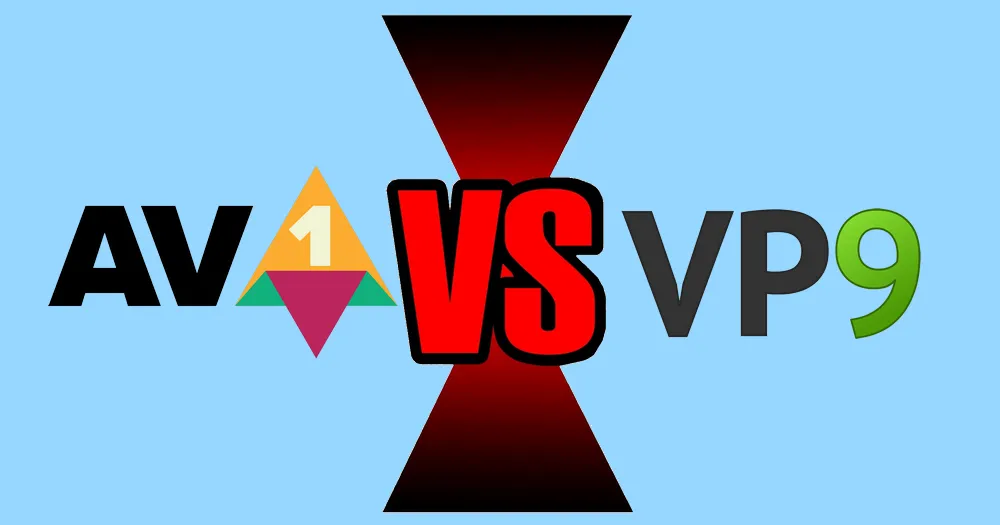Video streaming is an integral part of the digital world, and video codecs play a crucial role in ensuring a seamless streaming experience. There are many video codecs available today, and two such codecs that are gaining popularity in the video streaming industry are AV1 and VP9. Next, we will explore the similarities and differences between them.
AV1-encoded video won't play? Try to convert AV1 to VP9, HEVC, H.264, etc. with this free tool: https://www.videoconverterfactory.com/download/hd-video-converter.exehttps://www.videoconverterfactory.com/download/hd-video-converter.exe
Video streaming has become an essential part of our daily lives, and the demand for high-quality video content is ever-increasing. Video codecs are responsible for encoding and decoding video data, and they play a crucial role in determining the quality of the video being streamed. The quality of video also depends on the bitrate and compression efficiency of the codec being used.
AV1 and VP9 are two best-in-class codecs that are open-source and royalty-free, which means they can be used by anyone without any licensing fees. Both formats use advanced compression techniques to reduce video file size while maintaining the image quality. However, there are some differences between the two formats.
As a GUI-based novice-oriented video and audio processor, WonderFox HD Video Converter Factory Pro offers an easy solution to re-encode videos between any formats. Get this freeware, A/V format conversion is no longer a problem!

The AV1 codec is a next-generation video codec developed by the Alliance for Open Media, which is a consortium of companies that includes Google, Amazon, and Netflix, among others.
VP9, on the other hand, is a video codec developed by Google as a successor to the VP8 codec, and is part of the WebM project.
AV1 is open and royalty-free, under the Alliance for Open Media (AOMedia) license, with a broader and more inclusive licensing framework.
VP9 is also open and royalty-free under the BSD license, making it attractive for web and open-source projects.
Although VP9 is more efficient in terms of encoding and decoding performance, AV1 uses a more advanced compression algorithm than VP9, which means that it can achieve better compression efficiency at lower bitrates. To be exact, AV1 can compress video file size by around 30% compared to the VP9 and HEVC codecs to deliver better quality video with less file size.
In addition, AV1 requires more processing power for encoding and decoding than VP9. It is optimized for modern hardware, including CPUs and GPUs, which means that it's commonly used to stream high-quality video on high-end devices.
VP9:
AV1:
While compression efficiency is important, video quality is equally important. After all, nobody wants to watch a video that looks pixelated or blurry. When it comes to video quality, both VP9 and AV1 deliver excellent results.
VP9 delivers excellent video quality, but AV1 goes one step further. AV1 uses a cutting-edge compression technique called "adaptive bitrate streaming," which adjusts the video quality in real-time based on the user's internet connection. This ensures that the user always gets the best possible video quality, regardless of their internet speed.
When it comes to hardware support, VP9 has a clear advantage over AV1. VP9 has been supported by a wide range of hardware devices, including smartphones, laptops, and smart TVs.
On the other hand, AV1 is still relatively new and not widely supported by hardware devices. This means that AV1 videos may not play as smoothly on some devices as VP9 videos.
AV1 and VP9 have different use cases and adoption rates in the streaming industry. VP9 has been popularized on most video on-demand and streaming services such as YouTube, Vimeo, Twitch, etc., while AV1 is a newcomer and is not yet widely adopted. However, some major streaming services such as Netflix, Amazon Prime Video, and YouTube have started using AV1 for streaming 4K/8K video content.
Apart from editing and converting video files, WonderFox Free HD Video Converter Factory even allows you to download HD/FHD/UHD videos and music songs from YouTube and 500+ popular sites. All of these are 100% FREE!
So, which codec should you choose for video streaming? Both codecs offer high-quality video compression, so you can't go wrong with either choice. The answer depends on your individual needs and circumstances, including your hardware, the types of videos you want to stream, and compatibility.
If you have modern hardware and are looking for a next-generation performance-oriented video codec that can deliver stunning 4K/8K videos on a low bandwidth data connection, then AV1 is undoubtedly the best option. However, if you are using older devices or need a codec that is widely supported, then just go with VP9 for its high compression efficiency and low latency.
Both AV1 and VP9 are open-source codecs, which means that they will continue to evolve and improve over time. They are expected to play a significant role in the future of online video streaming.
Good news is, many video streaming platforms, hardware manufacturers, and software developers are now supporting AV1 and VP9, which will help accelerate their adoption in the coming years. This will help reduce the processing requirements and make AV1 and VP9 more accessible to everyone. But remember, as time will pass on, both the streaming industry and technological developments will ultimately shift towards AV1 and its successors.
A: Yes, there are several other video encoding formats available today, such as H.266/VVC, H.264/AVC, H.265/HEVC, VP8, and more. Each format has its own advantages and disadvantages, and the choice of format depends on the specific requirements of the application.
A: No, VP9 is still widely used and supported by a wide range of devices. While AV1 is on its way to widespread adoption, VP9 is a decent choice to deliver excellent video quality with better hardware support. It will not be obsolete in a short time.
A: Both AV1 and VP9 encoded video data can be encapsulated in the common container formats: MP4, MKV, and WebM.
A: You can check the video file properties with a media player like VLC that displays the video codec information, or check video codec using a media information tool like MediaInfo.
A: Yes, you can convert your existing videos to AV1 or VP9 using a video converter application. With either advanced video codec, it's a pretty good way to compress video file size and keep the original quality. However, keep in mind that the conversion process may take some time.
WonderFox Free HD Video Converter Factory is a 3-in-1 novice-oriented A/V processing toolkit for video and music downloading, editing, and converting. GET IT NOW, it won't let you down.
That's all the brief explanation of AV1 vs VP9. In summary, AV1 and VP9 are two of the most advanced and efficient video encoding formats available today. They offer better compression efficiency, higher image quality, and greater compatibility with different devices and platforms. While AV1 has an edge over VP9 in terms of compression efficiency and image quality, VP9 is more compatible with older devices and platforms.
Also, as the demand for high-quality video content grows, we may also see the emergence of new video codecs that can deliver even better compression efficiency and image quality than both AV1 and VP9. Cheers!

WonderFox HD Video Converter Factory Pro
1. 500+ optimized presets for fast conversion in bulk.
2. Compress large-sized videos with no quality loss.
3. Trim, merge, crop, rotate, flip, watermark video.
4. Download HD/FHD/4K/8K videos from 1000+ sites.
5. Record live streams, gameplay, webcam, video call
6. Make animated GIFs from video or image sequence.
7. Make ringtones, extract subtitles & more...
Privacy Policy | Copyright © 2009-2025 WonderFox Soft, Inc. All Rights Reserved